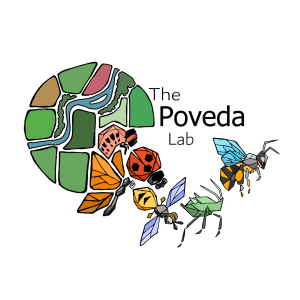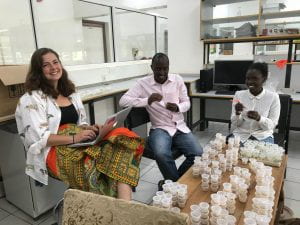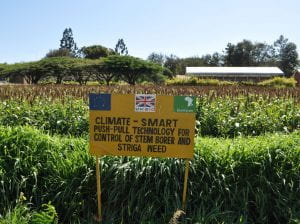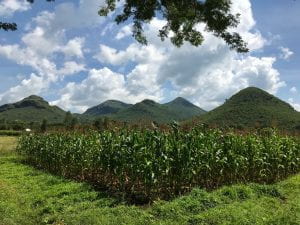In Sub-Saharan Africa, stemboring moths have been a devastating pest complex of cereal crops, including wheat, sorghum, and maize. In response to crop damage and the yield loss caused by the moth, the pest control technology called push-pull was developed in the late 1990s. This new technology has been successful at significantly reducing pest pressure, increasing yield by up to 350%, and has already been adopted by more than 237,000 farmers across the entire East African region (see www.push-pull.net). The technology consists of intercropping plants in the genus Desmodium that release repellent volatiles (the “push” crop), and surrounding fields with an attractive grass, or “pull” crop – which is either Brachiaria or Napier grass – where moths lay their eggs and trap the moth larvae. Significantly fewer pests are found in these push-pull fields than the conventionally managed control fields, even though they can be located directly adjacent to each other. In 2017, Kenya saw the introduction of an economically damaging lepidopteran invasive pest, Spodoptera frugiperda, commonly known as fall armyworm. Push-pull fields are showing effectiveness at controlling this new pest, though the mechanisms of this control have not been studied in this system due to fall armyworm’s very recent introduction.
Over the course of several field seasons, our lab in collaboration with researchers at the International Centre of Insect Physiology and Ecology (ICIPE) in Mbita, Kenya has conducted field and lab experiments examining the role of natural enemies in the push-pull system. We have collected arthropod natural enemies, pests, and predators, done pest damage surveys, and surveyed rates of parasitism in push-pull versus non push-pull fields. This work will further illuminate the mechanisms by which push-pull works to mitigate crop damage and increase yields.



